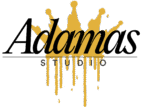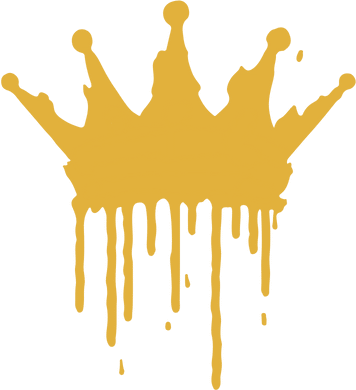Antique cut diamonds are hand-cut, vintage diamond styles that were developed before modern cutting techniques. These cuts prioritize romance, old-world charm, and warm, candlelight-like sparkle over the intense brilliance and precision of modern cuts.
If modern diamonds are like LED lights (sharp and bright), antique diamonds are like candlelight (soft and warm)—they offer a gentle glow with a distinctive vintage elegance.
1. What Are Antique Cut Diamonds? #
Antique diamond cuts were created in an era when diamonds were cut by hand, without the aid of computers or precise laser cutting tools. As a result:
-
Larger facets than modern cuts → Creates a softer, more diffused sparkle.
-
Higher crowns and deeper pavilions → Light enters and exits differently than in modern cuts.
-
Less focus on symmetry → Each diamond is unique, with subtle variations.
-
Designed for softer light sources → Optimized for candlelight rather than electric light.
💡 Analogy: If a modern brilliant cut is like a high-definition digital photo, an antique cut is like a classic oil painting—softer, unique, and full of character.
2. Types of Antique Cut Diamonds #
There are several different types of antique diamond cuts, each with its own unique history and beauty.
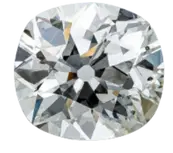
A. Old Mine Cut (The Original Cushion Cut)
🔹 The predecessor to the modern cushion cut
🔹 Shape: Square or slightly rectangular with rounded edges
🔹 Facets: 58 (like a round brilliant but with larger, chunkier facets)
🔹 Era: 1700s–1800s
🔹 Best for: Those who love romance and history
The Old Mine Cut is one of the oldest diamond shapes, originating in the 1700s when diamonds were cut by hand with rudimentary tools. It has a high crown, deep pavilion, small table, and large facets, giving it a distinct, soft sparkle.
💡 Effect: Looks warmer and more romantic, especially under dim lighting.
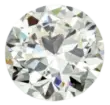
B. Old European Cut (The Round Brilliant’s Grandfather)
🔹 A more circular version of the Old Mine Cut
🔹 Shape: Rounder than the Old Mine Cut, but not perfectly symmetrical
🔹 Facets: 58 (like a modern round cut, but with a different arrangement)
🔹 Era: 1800s–early 1900s
🔹 Best for: Vintage lovers who want a round shape
The Old European Cut evolved from the Old Mine Cut and became popular in the 1800s and early 1900s. It has a more rounded shape, but still features a small table, high crown, and deep pavilion.
💡 Effect: Less brilliance than a modern round cut, but more fire (rainbow flashes) under candlelight.
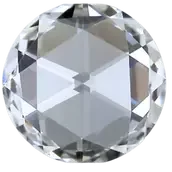
C. Rose Cut (The Most Distinct Antique Cut)
🔹 A flat-bottomed diamond with a domed top
🔹 Shape: Round or oval
🔹 Facets: 3 to 24 (arranged in a star or petal-like pattern)
🔹 Era: 1500s–1700s
🔹 Best for: Those who want a unique, low-profile, antique aesthetic
The Rose Cut is one of the oldest diamond cuts, dating back to the 1500s. It features a flat back (no pavilion) and a domed top with triangular facets that resemble the petals of a rose.
💡 Effect: Since it has no pavilion, it doesn’t sparkle like modern cuts—it glows softly instead of flashing brightly.
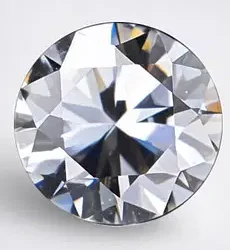
D. Single Cut (A Simple, Elegant Look)
🔹 A simplified version of the round brilliant cut
🔹 Shape: Round
🔹 Facets: 17 or 18 (instead of 58)
🔹 Era: 1600s–1900s
🔹 Best for: Small diamonds or minimalist vintage styles
The Single Cut was commonly used for small accent diamonds in vintage jewelry. It has fewer facets than a modern round brilliant, creating a more subtle sparkle.
💡 Effect: A softer, more subdued brilliance compared to modern diamonds.
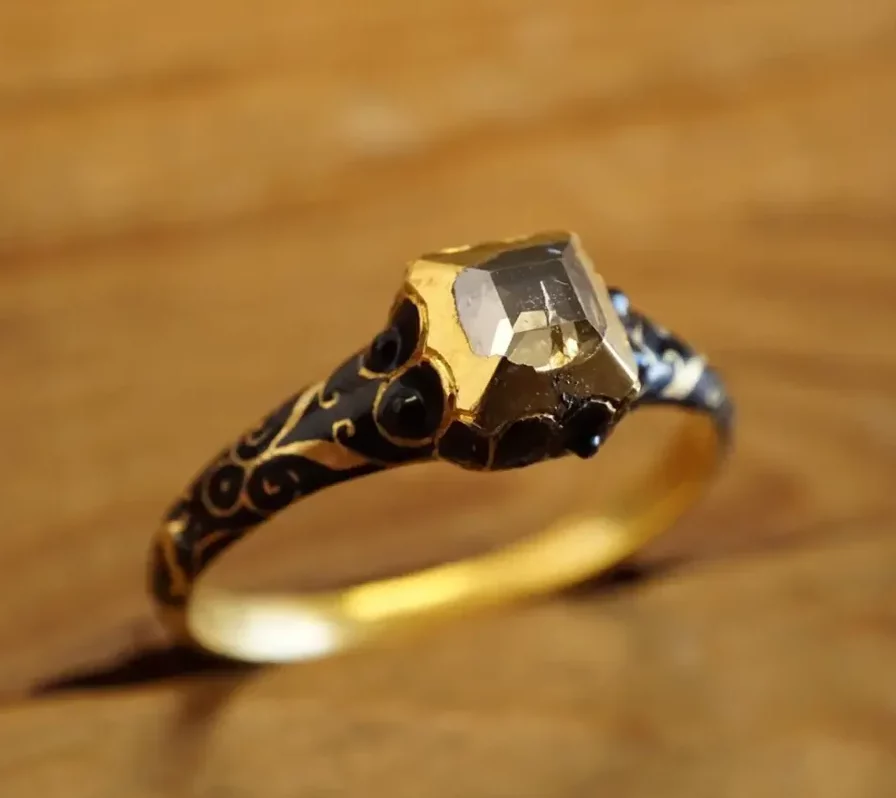
E. Table Cut (The Oldest Diamond Cut)
🔹 A simple, early form of diamond cutting
🔹 Shape: Square or rectangular
🔹 Facets: 4 (a large flat top with simple sides)
🔹 Era: 1200s–1600s
🔹 Best for: Those interested in historical, medieval-era diamonds
The Table Cut is one of the oldest known diamond cuts. It features a large, flat top and only a few simple facets.
💡 Effect: Minimal brilliance, but a strong historical charm.
3. The Science of Antique Cuts: Light Performance #
Unlike modern diamonds, which are cut for maximum brilliance and light return, antique cuts create a different kind of beauty.
-
Larger facets = Softer sparkle – Instead of tiny, intense flashes of light, antique cuts create broader, more subtle light reflections.
-
High crowns and deep pavilions = More fire – Old European and Old Mine Cuts create more colorful rainbow flashes than modern cuts.
-
Designed for candlelight – Since these cuts were developed before electric lighting, they perform best in warm, dim light.
💡 Analogy: If modern diamonds are like spotlights, antique diamonds are like glowing lanterns—romantic and mysterious rather than harsh and bright.
4. Choosing an Antique Cut Diamond: The 4Cs #
A. Cut
-
Antique cuts lack the precise symmetry of modern diamonds, so no two are exactly alike.
-
Look for good proportion and facet alignment rather than “ideal” measurements.
B. Clarity
-
Antique cuts hide inclusions well due to their larger facets and diffused light return.
-
A VS2-SI2 clarity is often sufficient for old cuts.
C. Color
-
Antique diamonds tend to have warmer tones (G-J color or lower).
-
A slight yellow or champagne hue is often desirable for an antique look.
D. Carat
-
Due to their deep pavilions, antique diamonds can appear smaller face-up than modern diamonds of the same carat weight.
💡 Pro Tip: If you love antique diamonds, don’t be afraid of lower color grades (G-K)—they look beautiful in warm, vintage settings.
5. Pros and Cons of Antique Cut Diamonds #
Pros:
✅ Unique and full of history – Each antique diamond is a one-of-a-kind piece of the past.
✅ Romantic, softer sparkle – A candlelight glow rather than intense brilliance.
✅ Great fire (rainbow flashes) – More colorful than modern cuts.
✅ Often less expensive than modern diamonds – Due to lower demand.
Cons:
❌ Less brilliance than modern cuts – If you want extreme sparkle, modern cuts are better.
❌ Less symmetry – Hand-cut stones are imperfect by nature.
❌ Can appear smaller for the same carat weight – Due to deeper proportions.
6. Who Should Choose an Antique Cut Diamond? #
Antique cuts are perfect for those who love history, romance, and uniqueness. They suit:
💍 Vintage and antique jewelry lovers – Perfect for Art Deco, Victorian, or Edwardian styles.
💍 People who prefer a softer, more romantic sparkle – Especially under dim lighting.
💍 Anyone who values uniqueness over perfection – Each antique diamond is one of a kind.
Final Thoughts #
Antique cut diamonds offer timeless beauty, rich history, and a unique aesthetic. Whether you love the fire of an Old European Cut, the softness of a Rose Cut, or the deep romance of an Old Mine Cut, antique diamonds are a wonderful choice.
